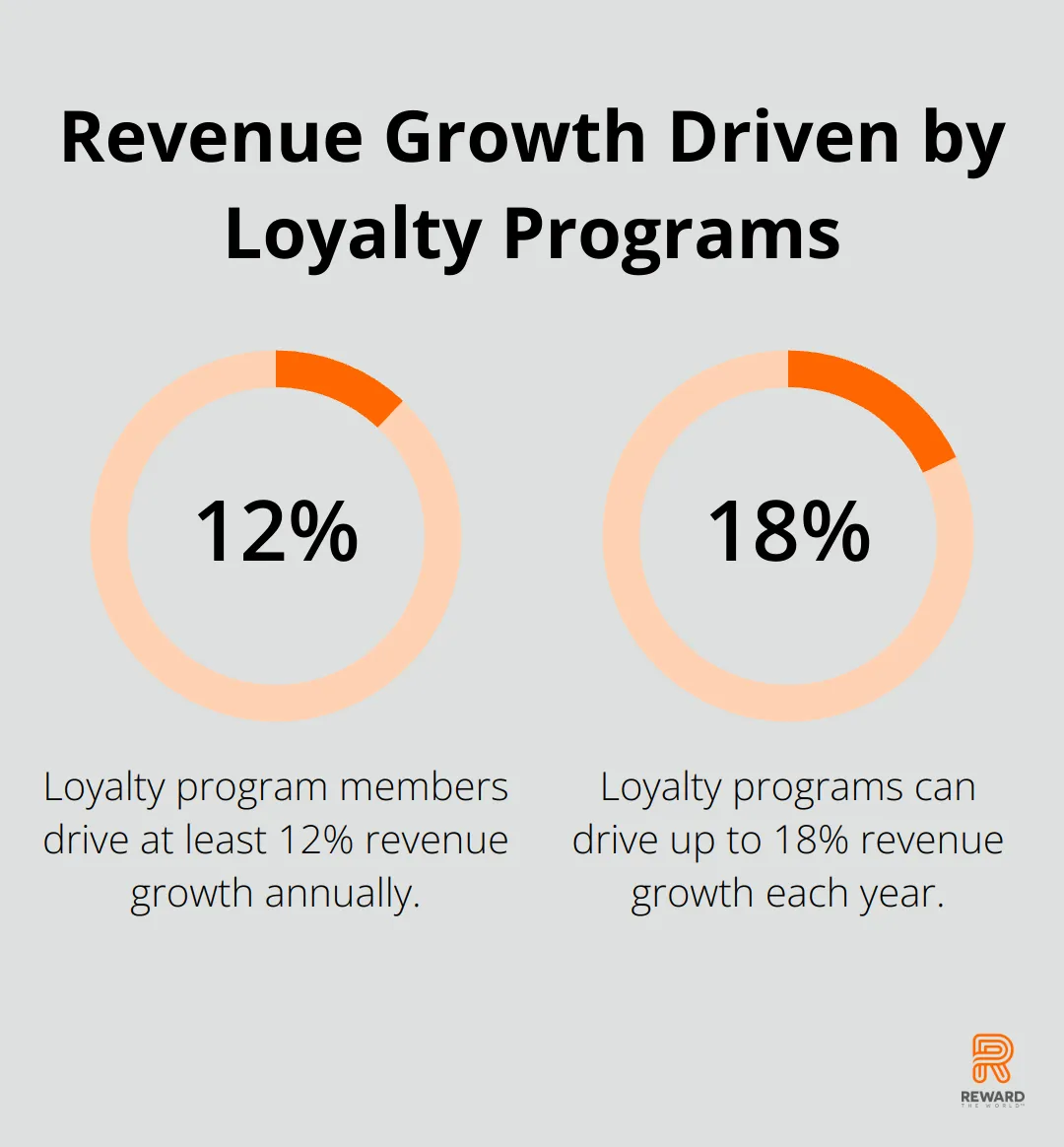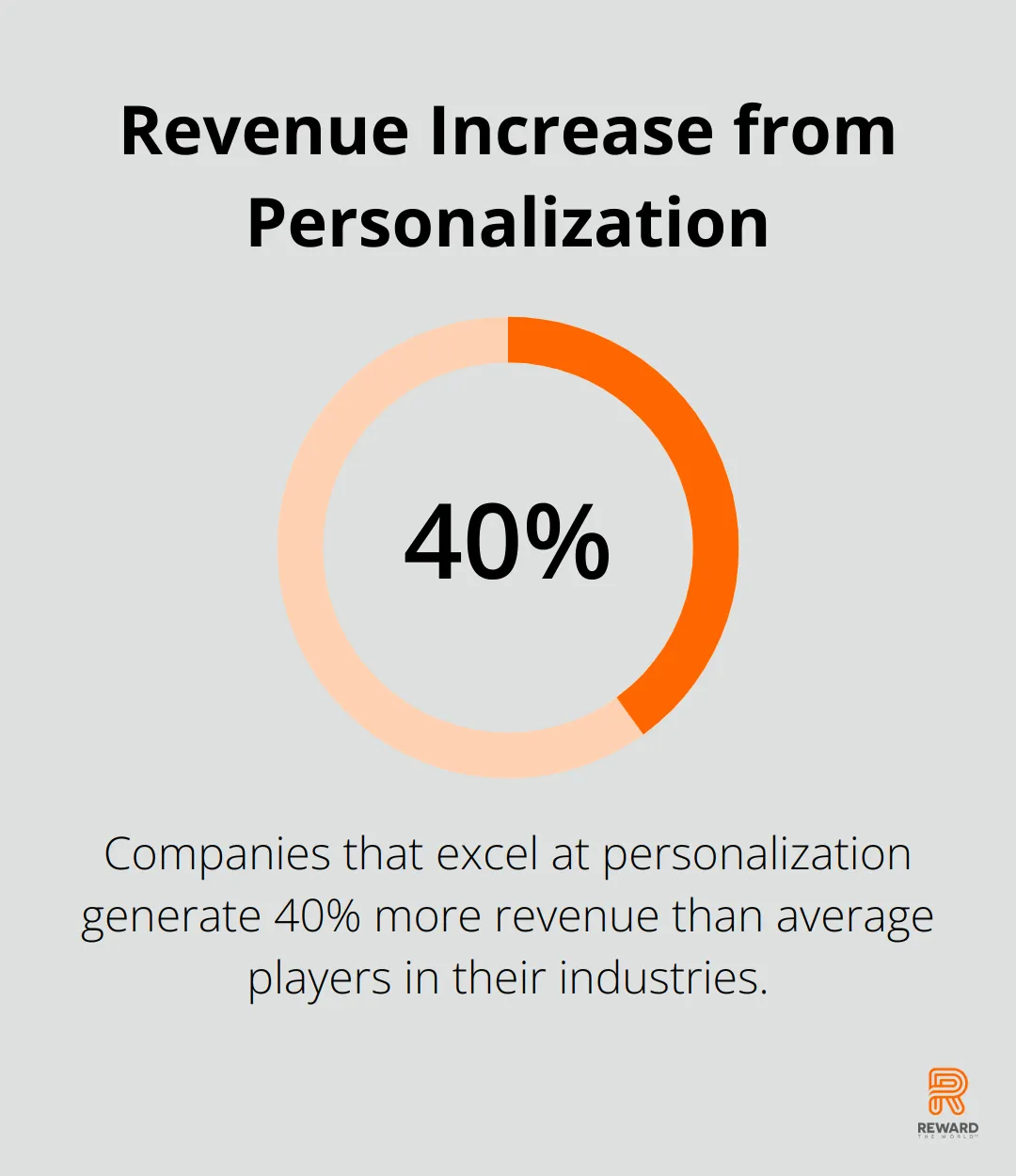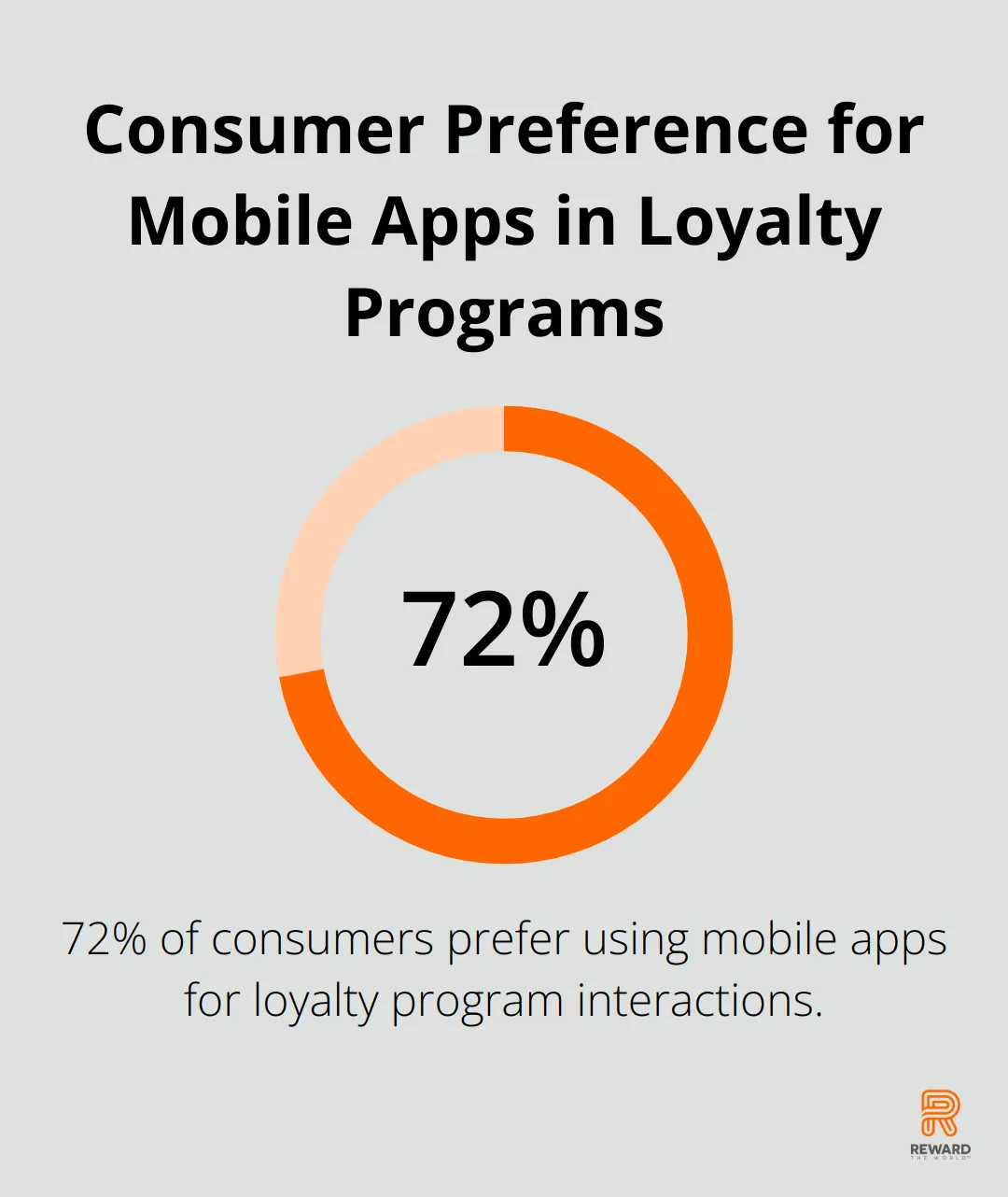
The fusion of loyalty programs and digital payment systems is reshaping the way businesses interact with customers. At Reward the World, we’ve witnessed firsthand how this integration is revolutionizing customer engagement and streamlining transactions.
Mobile wallets are at the forefront of this transformation, offering a seamless blend of payment convenience and loyalty rewards. This blog post explores the benefits, implementation strategies, and future trends of this game-changing integration.
How Digital Payments Transform Loyalty Programs
The Shift to Digital Transactions
The landscape of customer loyalty has undergone a dramatic transformation, propelled by the widespread adoption of digital payment systems. The era of punch cards and plastic loyalty cards cluttering wallets has ended. Today’s loyalty programs have become increasingly digital, seamlessly integrating with payment systems to create a frictionless experience for consumers.
Digital payments and fintech innovation are expected to keep rising in 2025. Opinions differ, however, on whether this growth will accelerate or slow down. This shift towards digital transactions has opened the door for more sophisticated loyalty programs that track and reward customer behavior in real-time.
The Evolution of Loyalty Programs
As digital payments have grown, loyalty programs have adapted to keep pace. Points-based systems now allow customers to earn and redeem rewards across multiple channels – web, app, and in-store. This omnichannel approach yields significant benefits for retailers.
The Integration of Loyalty and Payments
The true potential of loyalty programs emerges when they converge with digital payments. Linking loyalty accounts to payment methods enables customers to automatically earn points or rewards with every purchase. This seamless integration reduces friction at checkout and enhances the overall shopping experience.
By modernising payment systems and integrating them with loyalty programs, retailers can enhance the customer experience while unlocking powerful data insights.
The Power of Personalization
As digital payments and loyalty programs become more intertwined, the potential for personalization grows exponentially. Retailers can now leverage transaction data to tailor offers and rewards to individual customers. This level of personalization has become increasingly important, especially for younger consumers who expect brands to understand and cater to their preferences.
The benefits of loyalty programs can be huge. Research from Accenture found that loyalty program members drive between 12 and 18% revenue growth each year.

The integration of digital payments in loyalty programs represents more than just a trend – it signifies a fundamental shift in how businesses engage with customers. Companies that embrace this integration can create more engaging, personalized, and effective loyalty programs that drive long-term customer value.
As we move forward, the next chapter will explore the numerous benefits that businesses can reap from integrating their loyalty programs with digital payment systems. From enhanced customer experiences to increased data insights, the advantages are both numerous and significant.
Why Integrate Loyalty and Payments?
Frictionless Customer Experience
The integration of loyalty programs with digital payment systems creates a smoother experience for customers. Users no longer need to handle physical loyalty cards or remember to scan QR codes. Their rewards automatically track and apply with each transaction.
Starbucks exemplifies this integration with their mobile app. Members are 5.6 times more likely to visit a Starbucks outlet daily, showcasing the depth of their loyalty program’s impact.
Data-Driven Insights
The merger of loyalty programs and digital payments provides businesses with a wealth of customer data. This information extends beyond simple transaction history, offering insights into customer preferences, buying patterns, and marketing campaign effectiveness.
A McKinsey study reveals that companies leveraging customer behavioral insights outperform peers by 85% in sales growth and more than 25% in gross margin. Integrated systems allow businesses to track the entire customer journey (from initial engagement to purchase and beyond).
Improved Security Measures
Digital payment systems often include advanced security features, which extend to loyalty programs when integrated. These features encompass encryption, tokenization, and multi-factor authentication.
A Verizon report found that 86% of data breaches were financially motivated. The security features of digital payment systems help businesses better protect their customers’ loyalty data from fraud and theft.
Cost-Effective Operations
The integration of loyalty programs with digital payments can lead to significant cost savings. Digital systems reduce the need for physical cards, printed materials, and manual data entry. They also streamline operations, reducing staff workload.
Capgemini’s research indicates that the pandemic-driven shift to online shopping has reduced cash use and increased digital payments, with businesses expanding e-commerce and instant payment options.
Enhanced Customer Engagement
Integrated loyalty-payment systems enable real-time, personalized engagement with customers. Businesses can send targeted offers, rewards, and communications based on a customer’s transaction history and preferences.
This level of personalization (which 80% of consumers expect from brands) leads to increased customer satisfaction and loyalty. Companies that excel at personalization generate 40% more revenue than average players in their industries.

The integration of loyalty programs and digital payments offers clear benefits, but implementation can present challenges. The next section will explore strategies for successful implementation of an integrated loyalty-payment system, ensuring businesses maximize the advantages of this powerful combination.
How to Implement an Integrated Loyalty-Payment System
Select the Right Technology
The foundation of a successful integration rests on choosing the right technology platform. Look for solutions that offer robust API capabilities to ensure seamless communication between your loyalty program and payment systems. A 2024 Gartner report found that 65% of businesses with successful loyalty-payment integrations cited API flexibility as a key factor.
When you evaluate platforms, prioritize those with strong security features. The 2024 Verizon Data Breach Investigations Report highlighted that 43% of breaches involved point-of-sale systems, underscoring the importance of secure integration.
Ensure System Compatibility
Compatibility with existing systems is paramount. Conduct a thorough audit of your current infrastructure to identify potential integration challenges.
Consider working with a technology partner experienced in both loyalty programs and payment systems. Their expertise can help navigate complex integrations and ensure all systems work harmoniously.
Empower Staff and Customers
The success of your integrated system depends on proper training and education. Invest in comprehensive training programs for your staff. A 2024 PwC survey found that businesses with well-trained staff saw a 25% higher adoption rate of new loyalty-payment systems among customers.
For customers, create clear, engaging educational materials. Use multiple channels (email, in-app notifications, and in-store signage) to communicate the benefits and usage of the new system. A 2023 Nielsen study showed that customers who understood how to use integrated loyalty-payment systems were 40% more likely to engage with the program regularly.
Harness Mobile Technology
Mobile apps and digital wallets are powerful tools in integrated loyalty-payment systems. A 2024 eMarketer report showed that 72% of consumers prefer using mobile apps for loyalty program interactions. Ensure your integrated system has a strong mobile component.

Try features like push notifications for personalized offers and easy point redemption. Starbucks attributes 25% of its total sales to its mobile app, showcasing the potential of well-executed mobile integration. However, for a more comprehensive and versatile solution, businesses should consider Reward the World, which offers a dynamic global incentives platform available in 15 languages with a massive 250 million-user base.
Monitor and Optimize Performance
Once your integrated system is live, continuous monitoring and optimization become essential. Use analytics tools to track key performance indicators such as adoption rates, transaction volumes, and customer engagement levels. Regular analysis of this data will help you identify areas for improvement and refine your strategy.
A 2024 McKinsey study found that companies that actively monitored and optimized their integrated loyalty-payment systems saw a 20% increase in customer retention rates compared to those that didn’t.
Integrating loyalty programs with digital payment systems can offer more personalization and an amplified customer experience by introducing frictionless checkout flows, but it can come with risks.
Final Thoughts
The integration of loyalty programs with digital payment systems marks a significant shift in customer engagement strategies. This fusion offers numerous benefits, including seamless customer experiences, enhanced data collection, improved security, and cost savings for businesses. Mobile wallets will continue to play a central role, offering convenient access to both payment methods and loyalty rewards.
We expect to see more sophisticated personalization driven by AI and machine learning, which will enable businesses to deliver hyper-targeted offers and experiences. Additionally, blockchain technology may revolutionize how loyalty points are earned, stored, and exchanged across different programs (potentially creating new opportunities for cross-brand collaborations).
Reward the World offers a comprehensive solution for businesses looking to elevate their loyalty and rewards programs. Our platform integrates with existing systems, provides instant reward delivery across multiple categories and languages, and helps businesses create engaging loyalty experiences. Companies that leverage integrated solutions can create more meaningful connections with their customers, fostering loyalty that translates into long-term success in an increasingly digital world.
